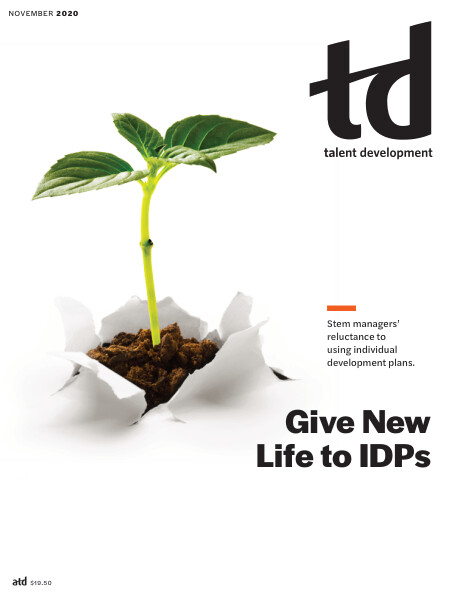TD Magazine Article
Train Employers to Lead an Age-Diverse Workforce
Organizations admit they lack the skills to guide and enhance multigenerational employees.
Mon Nov 02 2020

What do a recent college graduate, a midlevel account supervisor, and a 61-year-old managing partner have in common? They all can thrive within the same organization using their distinct skill sets to move their workplace forward despite age differences.
According to AARP's Global Insights on the Multigenerational Workforce issue brief, older workers are staying in the workforce longer than in previous years and are playing significant roles in solidifying organizations' bottom lines. Despite the business benefits, those workers often face workplace discrimination because of their age, and employers find it hard to push protocols that endorse employees living, learning, and earning longer.
While some organizations emphasize staffing a diverse age demographic for such reasons as well-roundedness and good transfer of knowledge among employees, too many companies fall short of embracing older workers' needs. According to the survey, about four in five companies have a multigenerational workforce. Yet, only 42 percent of surveyed organizations educate management teams about how to lead multigenerational workforces, which indicates that more than half do not provide training in this area. According to AARP, that results in "millions of workers across the globe working in a multigenerational environment managed by someone without the training to maximize these teams."
What then, can talent development professionals do to help support a multigenerational workforce? Provide training.
AARP found that at least two-thirds of employers would do more to create and enhance an age-diverse workforce if appropriately trained to do so. With the majority of organizations acknowledging that skills gap, providing training is a significant step toward creating more inclusive organizational cultures.
The report offers recommendations for companies, some of which are within talent development's scope of responsibilities. One action item focuses on ensuring that diversity training for managers and staff address ageism. Another is to craft an age-diverse and inclusive talent strategy that develops all employees' critical digital and cognitive capabilities, social and emotional skills, and adaptability and resilience.
In addition to benefiting the bottom line, there are many cultural perks to employing a multigenerational workforce, and talent development professionals can be a conduit to ensuring the availability of training programs that employers admittedly need.

